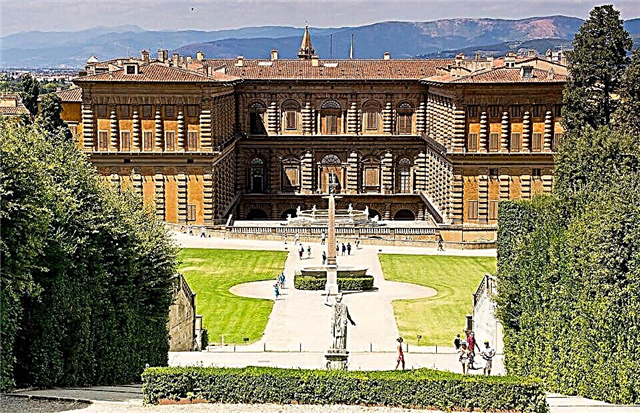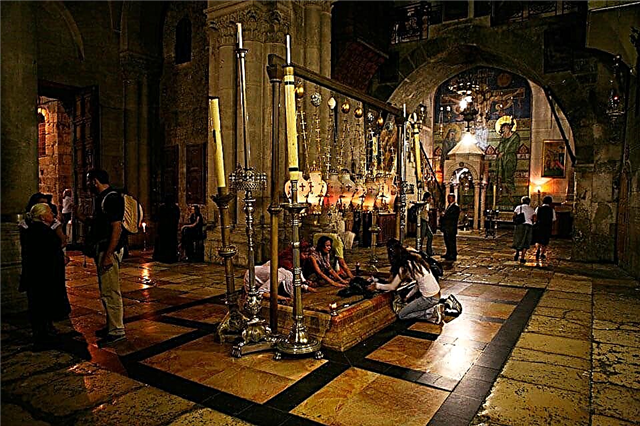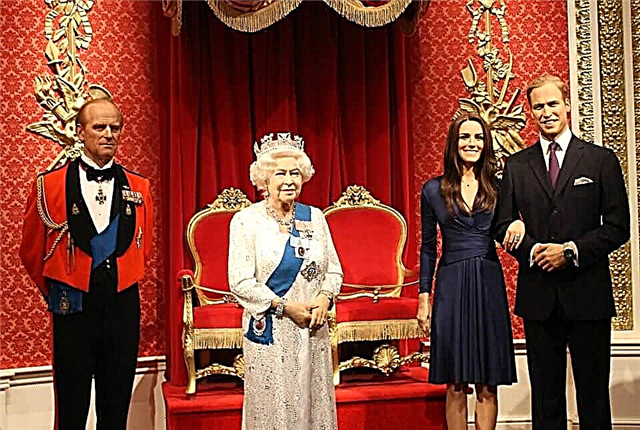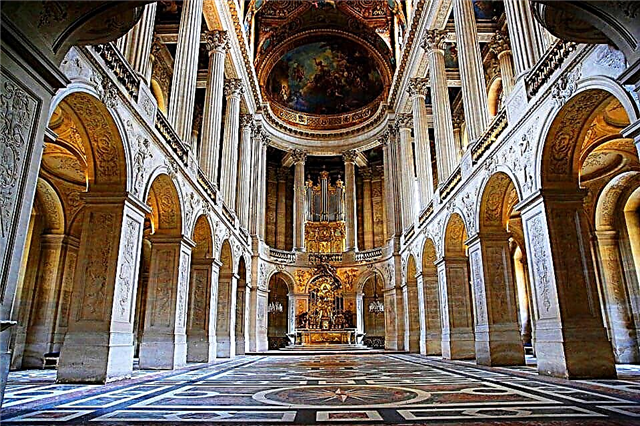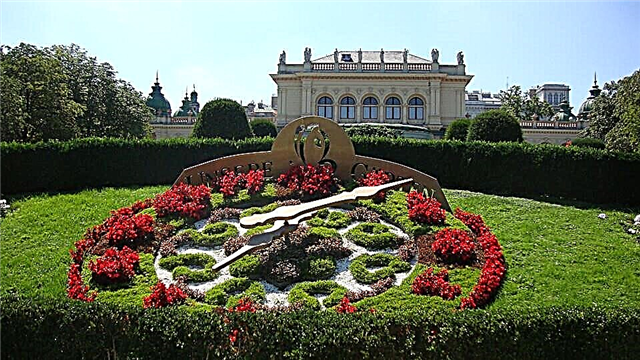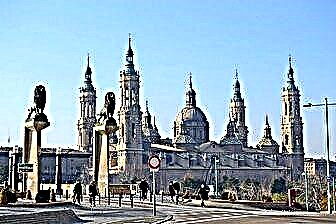The appearance of modern Zaragoza began to take shape during the time of the Cordoba Caliphate, when the Moors reigned supreme over almost the entire territory of the Iberian Peninsula. It was during this period that the luxurious architectural style of Mudejar flourished, harmoniously combining Arabic and European motives.
History left to descendants the luxurious temples of Nuestra Señora del Pilar and La Seo, the Muslim fortress of Aljafería, which looks like it was built in our time, picturesque squares in the historic center of the city. Zaragoza still remembers the presence of the crowned Isabella of Castile and Ferdinand of Aragon, carefully preserves the cultural heritage of the talented Francisco Goya and Pablo Gargallo, hospitably opening its gates to tourists.

The best hotels and hotels at affordable prices.
from 500 rubles / day
What to see and where to go in Zaragoza?
The most interesting and beautiful places for walking. Photos and a short description.
Basilica of Nuestra Senora del Pilar
The largest baroque temple in Spain, built in the 17th-19th centuries. The first religious building on the site of an existing church appeared in the 2nd century, then it was successively replaced by Romanesque and Gothic churches. The modern building makes a strong impression: along the edges there are 4 towers 90 meters high, 12 domes are covered with Moorish ornament, Francisco Goya himself was engaged in interior painting.

Cathedral of La Seo
In ancient times, on the site of the temple there was a forum (the center of a Roman city), during the reign of the Moors - the Saragusta al-Bayda mosque. In the 12th century, after the liberation of Sagagosa, a Christian temple began to be erected instead of a Muslim temple. Since the beginning of the 13th century, coronations, weddings and burials of the Aragonese rulers have taken place in La Seo. The cathedral was built in the magnificent Mudejar style. Craftsmen from Seville took part in its decoration.

Alhaferia
Moorish fortress of the XI century. It was built after the collapse of the Cordoba Caliphate, when Zaragoza became the capital of an independent emirate. After 1384, Aljaferia became the seat of the Catholic kings Isabella of Castile and Ferdinand of Aragon. At this time, the building was rebuilt in the Mudejar style with Gothic elements. Since the 15th century, the dungeon of the Inquisition was located here, then - the barracks. After restoration in the 20th century, the fortress housed a museum, court and legislative assembly of Aragon.

Pilar Square
Another name for the square is Cathedral, as the facades of two cathedrals overlook it at once. The first mentions of this place are found in the documents of the Early Middle Ages. It is believed that there was a cemetery here until the 16th century. The square acquired its modern look only in the 1940s after restoration. One of the main attractions besides the cathedrals is the Fuente de la Hispanidad fountain symbolizing Latin America.

Spain square
One of the central squares of the city, where a monument is erected to the inhabitants of Aragon who died for the fatherland, who courageously resisted Napoleon's army for two months. The fountain jets are gushing around the monument. As a result of the last restoration, the place acquired a rather modern look - it was surrounded by the facades of hotels, business centers and administrative buildings.

Calle Alfonso street
A typical walking street with many tourist-oriented shops and restaurants for all tastes. Probably there is one in every Spanish city. The alley is located in the very center and stretches from the Nuestra Senora del Pilar Basilica. In winter, on Christmas, the street is decorated with ceremonial garlands; in summer, people sit at the tables of street cafes, enjoying lunch and wine.

A stone bridge
Crossing the Ebro river, built in the middle of the 15th century. Two centuries later, it was destroyed by a flood, but after a few years the structure was restored. Quite often, the structure is called the Lion's Bridge, since at the entrance there are four bronze figures of lions, created by the sculptor F.R.Lachos in 1991. The noble king of beasts is considered the symbol of Zaragoza.

Roman Forum Museum
In ancient times, Zaragoza was a thriving Roman colony. Today, on the site of the ruins of the former forum, there is a museum where you can see what remains of the ancient square, theater, thermal baths and other buildings. Near each object, its original image is placed, since it is not always clear from the pile of stones how the structure looked in reality.

Zaragoza Museum
The collection consists of ethnographic, archaeological and artistic exhibits; there is also a library and a restoration department at the museum. Here you can see examples of Roman mosaics, interior items from the Aljafería fortress, Renaissance paintings, Romanesque sculpture and much more. The Zaragoza Museum is considered one of the largest in the province of Aragon.

Pablo Gargallo Museum
The exposition is dedicated to the work of P. Gargallo, an avant-garde artist who is considered the founder of this trend in Spain. The master's works are exhibited in the 17th century Archillo palace. Although the painter is not as famous as Pablo Picasso, his contribution to art is difficult to overestimate. Many buildings in Barcelona are decorated with his work, among the most famous are the Hospital of Santa Creu and Sant Pau and the Palace of Catalan Music.

La Seo Tapestry Museum
The museum is located on the territory of the La Seo Cathedral. The tapestry collection consists of artfully executed panels depicting scenes from the lives of monarchs, aristocrats and townspeople. Each canvas is large enough, it depicts an incredible number of characters and details, which makes you admire the skill of the people who created this magnificence.

Francisco Goya Museum
The collection is dedicated to the work of the famous painter, who, thanks to his talent, gained recognition throughout the world. The museum was opened in 1979 at the initiative of Professor H. K. Aznar and his wife M.L. Alvarez Pinillos. The couple collected Goya's works for a long time and decided to make their collection public. Today, in addition to the artist's canvases, the museum exhibits prints and paintings by his contemporaries.

Cultural center "CaixaForum"
The center is housed in a building of modern architecture, shaped like two crossed cubes. The building was designed by the architects of the Estudio Carme Pinos bureau. They were faced with the task of creating something unusual with the help of progressive technologies. CaixaForum consists of exhibition galleries and concert venues, as well as a restaurant, observation deck and a shop.

Stock exchange building "La Lonja"
Historic building of the 16th century in Pilar Square, built on the initiative of the Aragonese Bishop Hernando. Today, an exhibition hall is located under its high arches, so you can get inside only during the opening hours of some vernissage. The building of the stock exchange in the Middle Ages often became the architectural decoration of the city and a symbol of its financial power.

Central market
The market appeared in Zaragoza in the Middle Ages. Today, the shopping area is housed in a picturesque two-story building. Here you can buy products from local farmers, Spanish specialties, sweets and spices. In addition to products, the market sells clothing, jewelry and antiques at very affordable prices. In small cafes located right on the territory, visitors are offered to taste dishes of national cuisine.

Zaragoza Aquarium
The City Aquarium specializes exclusively in river species, which makes its collection quite unique.The basins are inhabited by representatives of the fauna of the African Nile, the Spanish Ebro, the Brazilian Amazon, the Vietnamese Mekong and the Australian Darling Murray. During a tour of the aquarium, guests are told interesting facts about river inhabitants and ecosystems.

Fountain-waterfall Ispanidad
The fountain graced Pilar Square in 1991. It was built to commemorate the 500th anniversary of the discovery of America. It is made in the form of a split niche where streams of water pour. Next to the fountain is the figure of the globe. Ispanidad is the collective name for 23 countries where Spanish is spoken. They are united by common cultural roots thanks to the era of the great geographical discoveries.

Puerto Venice
A large shopping and entertainment complex where you can shop in numerous stores, taste delicious dishes in restaurants and just have a good time watching a movie in one of the cinemas. In the center there are fountains and an artificial lake, the shores of which are lined with green spaces. The place looks more like a seaside resort than a shopping mall.

Park Grande Jose Antonio Labordeta
The oldest park in Zaragoza, where many interesting sights are located. Monument to King Alfonso I the Warrior, two branches of the city museum, a botanical garden of the 18th century, monuments to the actor P. Sorie and the opera singer M. Flethe, the Rincon de Goya pavilion. The park received its modern name in 2010 in honor of the politician and poet HA Labordeta.

Ebro river
The Ebro is the second longest waterway of the Iberian Peninsula after the Tagus, and also the deepest in Spain. It is believed that the name of the river was given by the ancient Iberians. The Ebro originates in the Cantabrian Mountains, crosses the Aragonese Plain and flows into the Mediterranean Sea. Several settlements are located on its banks, including Zaragoza. The river is not suitable for navigation, but its waters are used for irrigation of vast agricultural lands.



